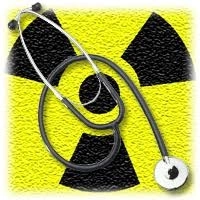
The Difference Between Conventional Radiation Therapy and Radioisotope Treatment
Published on: 2025-06-15 | Written by: Professor Dr. Azza Mohamed Darwish, Professor of Oncology and Nuclear Medicine
When a patient is diagnosed with cancer, one of the most important steps is choosing the right treatment method to eliminate cancer cells. Among the most widely used options are conventional radiation therapy and radioisotope-based treatment.
In this article, Dr. Azza Mohamed Darwish, specialist in nuclear medicine and oncology, explains the key differences between these two approaches—and when each is used.
What Is Conventional Radiation Therapy?
Conventional radiation therapy uses high-energy beams (such as X-rays or protons) directed from outside the body to the tumor site to destroy cancer cells or prevent their growth.
Advantages:
-
Widely used for many cancer types
-
Precisely targeted to a specific area
-
Delivered over multiple sessions across several weeks
Disadvantages:
-
May cause some damage to surrounding healthy tissue
-
Side effects such as skin redness, fatigue, and reduced immunity
What Is Radioisotope Treatment?
In nuclear medicine, treatment involves injecting or ingesting radioactive isotopes, which travel through the bloodstream to specifically target cancer cells from within and destroy them.
Advantages (as explained by Dr. Azza Mohamed Darwish):
-
Highly targeted destruction of cancer cells
-
Minimal damage to healthy tissue
-
Ideal for cancers not easily accessible by external radiation, such as:
-
Thyroid cancer (radioactive iodine – I-131)
-
Advanced prostate cancer (Actinium-225)
-
Neuroendocrine tumors (Lutetium-177)
-
-
Fewer side effects than external beam radiation
Key Differences Between the Two Methods:
| Factor | Conventional Radiation Therapy | Radioisotope-Based Treatment |
|---|---|---|
| Radiation Source | Outside the body | Inside the body (via bloodstream) |
| Delivery Method | External machines | Injections or oral capsules |
| Target Range | Localized area | Systemic, targeting specific cells |
| Side Effects | More on skin and surrounding tissues | Lower impact on healthy tissue |
| Frequency | Multiple sessions | Single or spaced sessions |
Which Treatment Is Right for You?
Choosing the right therapy depends on several factors:
-
Type and location of the tumor
-
Stage of cancer
-
Patient’s overall health
-
Response to previous treatments
Dr. Azza Mohamed Darwish emphasizes that treatment decisions are made within a multidisciplinary team to ensure the best outcomes for the patient.
A Word from Dr. Azza Mohamed Darwish:
"The ultimate goal of any cancer treatment is to destroy cancer cells with minimal harm to the body. With the advancement of nuclear medicine, we now have precise tools that offer effective results with fewer side effects."

